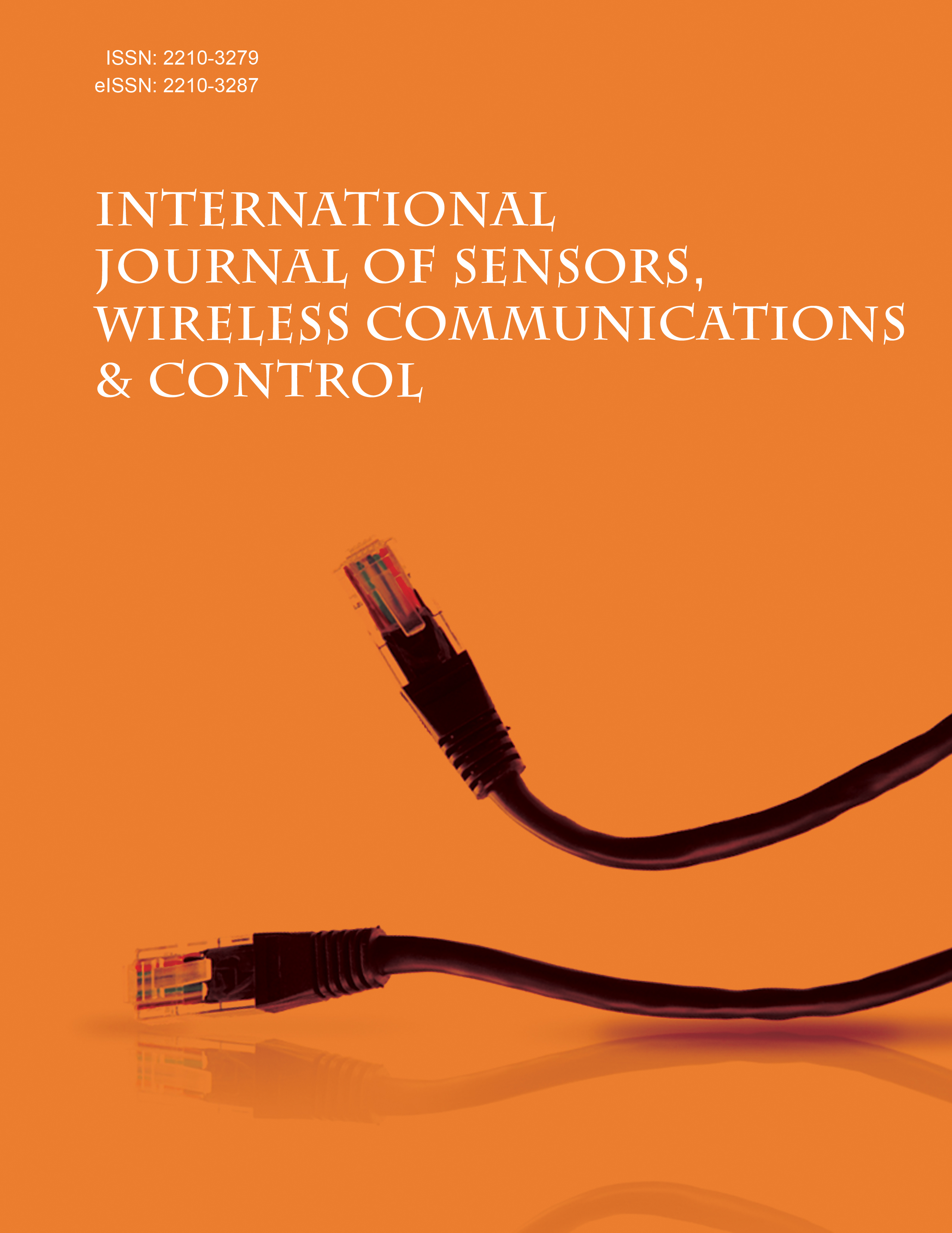- Home
- A-Z Publications
- International Journal of Sensors Wireless Communications and Control
- Previous Issues
- Volume 8, Issue 3, 2018
International Journal of Sensors Wireless Communications and Control - Volume 8, Issue 3, 2018
Volume 8, Issue 3, 2018
-
-
Fuzzy Link Cost Estimation based Adaptive Tree Algorithm for Routing Optimization in Wireless Sensor Networks using Reinforcement Learning
More LessAuthors: Kuldeep Singh and Jyoteesh MalhotraBackground and Objective: Internet of things, being a technological advancement in collaboration with traditional wireless sensor networks, are characterized by a highly complex, largescale, dynamically changing, heterogeneous and asymmetric wireless network. These constraints make routing in such wireless sensor networks a challenging task. In this paper, fuzzy link cost estimation based Adaptive Tree routing algorith Read More
-
-
-
Deep Learning Trends for Video Based Activity Recognition: A Survey
More LessAuthors: Chandni, Alok K. S. Kushwaha and Jagwinder K. DhillonBackground and Objective: Video-based human activity recognition is a prominent area of research due to a wide range of applications from intelligent video surveillance to human-computer interaction. Recent work on video analysis is focused on applying deep learning approach to accomplish the task of activity recognition. Conclusion: Deep networks can dramatically improve the recognition performance because Read More
-
-
-
Millimeter Wave Channel Capacity for 5th Generation Software Defined Radio Communication System in Vegetation Area
More LessAuthors: S.K. Agrawal and Kapil SharmaBackground & Objective: 5G Millimeter Wave (mmWave) Communication System is emerging as an upcoming commercial version of wireless communication for worldwide users. 5G mmWave Communication System can provide high data rates in the range of Gbps for many users simultaneously. This research work presents vegetation attenuation control in 5G mmWave communication system using software defin Read More
-
-
-
A High Sensitivity Pressure Sensor using Two Dimensional Photonic Crystal Cavity
More LessAuthors: Tarek Zouache, Abdesselam Hocini and Ahlam HarhouzBackground & Objective: In this work, ahydrostatic pressure sensor based on a cavity coupled to a photonic crystal waveguide is proposed. A defect is introducedto createa sharp resonance in the structure which makes it useful for detecting pressure changes. The sensing principle is based on the shift of the resonant wavelength with the change refractive index which arises due to the hydrostatic pressure effect. The proposed Read More
-
-
-
Novel QoS Aware OLSR Protocol for Opportunistic Spectrum Access in Cognitive Radio Ad-Hoc Networks
More LessAuthors: Surjeet Balhara and Priyanka BhardwajBackground & Objective: In the design of ad-hoc networks, potential challenge is how to route information reliably and efficiently from one node to another in high level of mobility. Moreover, remaining queuing capacity is also affected on the packet loss. Much research efforts have been consistently done to create protocols that consider minimum bandwidth, better throughput and less average delay. It is widely accepted Read More
-
-
-
Joint Mode Selection and Resource Allocation in Device-to-Device Communications
More LessAuthors: Shahriar S. Moghaddam and Hossein GhavamiBackground & Objective: In this paper, we convert the problem of joint mode selection and resource allocation in in-band underlay device-to-device (D2D) communications into two subproblems. First, by using the closed-form expressions for the outage probability of both single-cell direct and relay-aided D2D communications in Rayleigh fading channel, a distance-based procedure is derived which introduces proper mode. For t Read More
-
-
-
Cooperative Spectrum Sensing Based on Generalized Likelihood Ratio Test for Cognitive Radio Channels with Unknown Primary User's Power and Colored Noise
More LessAuthors: Shahriar S. Moghaddam and Ameneh HabibzadehBackground & Objective: This paper proposes a modified eigenvalue-based Generalized Likelihood Ratio Test (GLRT). The proposed model is appropriate for cognitive wireless radio system under colored noise and unknown primary user's power. Herein, we introduce an optimization problem, which maximizes the detection probability under the constraints of false alarm, sensing time, the weighting of eigenvalues, an Read More
-
Volumes & issues
Most Read This Month
Article
content/journals/swcc
Journal
10
5
false
en


